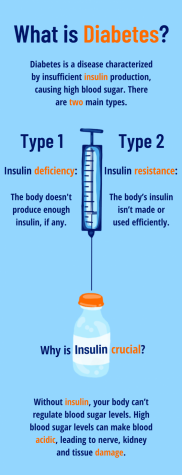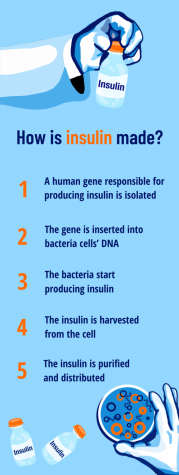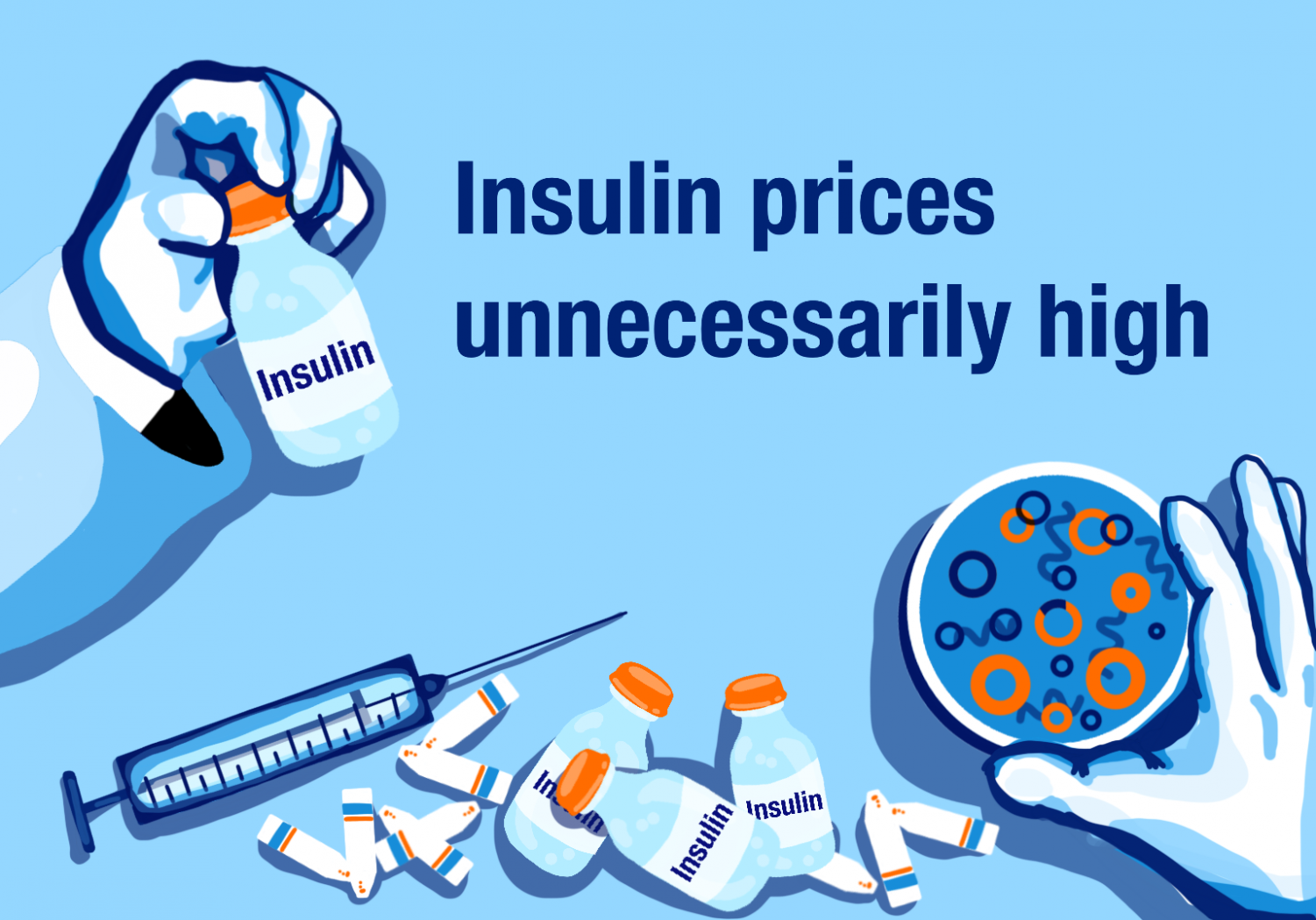Insulin prices unnecessarily high
State legislators seek to address cost, debate who will pay
March 19, 2020
With hundreds of dollars every month going toward insulin, life with Type 1 diabetes for junior Thor Anderson can be costly, with the actual price of insulin varying from person to person.
“With insurance, the price (of insulin) is about $270 to $300 a bottle and a typical person goes through maybe two or two and a half bottles a month, so it really adds up,” Anderson said. “If you’re getting even less insulin, it’s going to lead to loss of function in fingers and toes, blindness and kidney damage, and the effects will eventually amplify and lead to death.”
Companies spike insulin prices
According to Democratic St. Louis Park state representative and Majority Leader of the House of Representatives Ryan Winkler, the price of insulin has spiked 400% over the past decade despite the product remaining relatively unchanged.
“Many people can’t afford it today and the drug companies that are manufacturing it, there are only three in the world,” Winkler said. “So they are reaping huge profits from this and depriving people of something they need.”
According to junior Daniel Goldenberg, a Type 1 diabetic, insulin is unique compared to other common medicines, as diabetics literally cannot live without it.
“Instead of using insulin to lower your blood sugars, you start to rely on fat, so it’s breaking down,” Goldenberg said. “Obviously, that sounds really bad and there are many other bad symptoms. You’ve heard of people that get their feet removed.”

While visiting the coffin of a young man who had passed away as a result of insulin rationing, Republican Senator Jim Abeler of Anoka said he felt compelled to take action on the insulin crisis.
“It just makes you want to weep,” Abeler said. “It inspired me to say, ‘this is never going to happen again.’”
Civics and economics teacher Bradley Brubaker said diabetics’ reliance on insulin creates an endless demand for the drug, allowing companies to continuously raise prices without consequence.
“It’s different with insulin because you’ve got somebody backed into a corner. They absolutely have to have it,” Brubaker said. “So it’s not a pure capitalistic venture when somebody absolutely has to have it.”
Sophomore Truman Fillbrandt, who has Type 1 diabetes, urged for change to protect the lives of diabetics.
“Almost every month now due to insulin rationing (diabetics die) and basically if lawmakers don’t (make changes), the blood is on their hands.” Fillbrandt said.
Minnesota legislation works to save lives
In order to address the increasingly unaffordable insulin pricing, state legislators have introduced two bills — one led by Democrats in the House and another led by Republicans in the Senate.
According to Abeler, a co-author of the Senate bill, both bills aim to eliminate deaths associated with emergency insulin rationing. However, the Senate bill requires manufacturers to aid in supplying insulin, supplementing the cost with tax-payer dollars.
Alternatively, the House bill funds the program entirely through charging manufacturers, according to Winkler, who co-authors the House bill.
Anderson said he believes prices can only be fixed by legislation as the current marketplace does not allow for competition.
“The problem right now is just that there are patents on insulin so no one can produce it themselves or no competitors can produce it,” Anderson said. “Legislation is going to be by far the most effective option.”
In order to lower costs, Brubaker said regulators must address the availability and the cost of insulin without simply paying for individuals.
“If somebody absolutely has to have it, I think that’s where our government has to step in and figure out a way to make things available to people who can’t pay that price,” Brubaker said.
Goldenberg encouraged a balance between the profit of companies and the accessibility of insulin.
“I don’t think it should be regulated to the point where it pretty much destroys the industry,” Goldenberg said. “There’s still lots of employees and the solution isn’t just to destroy all these (companies) — we’ve got to make sure that they’re still profitable — but obviously limited so it’s affordable for more people.”
Abeler said he believes both bills will be combined and passed into law in the near future, and will be looked back upon as a great bipartisan success to save countless Minnesota lives.
“When the dust settles, this will be seen as an example of how two parties can work together to solve very hard problems,” Abeler said. “It may not seem that way just yet, but it’s going to come to that and the solution will be a bipartisan, solid solution that will stand the test of time.”
As of March 16, both bills have passed their respective chambers and are entering conference committee, according to the Star Tribune.
Change could affect community members
Sophomore Maria Koepke, a Type 1 diabetic, said the price of insulin led a friend of hers to turn to Koepke’s family for support.
“My family actually had to step in to help her pay for it and that was a very difficult time for us,” Koepke said.
Winkler, who’s son has diabetes, said legislation will likely help relieve the families of diabetics, especially when it comes to the expenses associated with treating diabetes.

“We don’t have a problem paying for his insulin, but my own personal feeling is that I would like a bill like this put into law so that other families can have the security of knowing that insulin will be available for people with diabetes, regardless of whether they have insurance or not,” Winkler said.
Anderson said he believes the current situation will only get worse without government intervention.
“I think there would be problems where more and more people would not actually be even able to pay for their insulin and would start having health problems because of that,” Anderson said.
Winkler said it is essential that insulin prices are lowered for student diabetics as without change, they eventually will have to fend for themselves against the staggeringly high prices.
“You go to school with classmates with Type 1 diabetes and as you graduate from high school and are in your 20’s, even if you have insurance and you have diabetes, eventually you need to leave your parents insurance,” Winkler said. “So, for anyone with diabetes or who gets it, this is a basic lifesaving security measure.”

